Count Radetzky. Czech Hero of the Austrian Empire
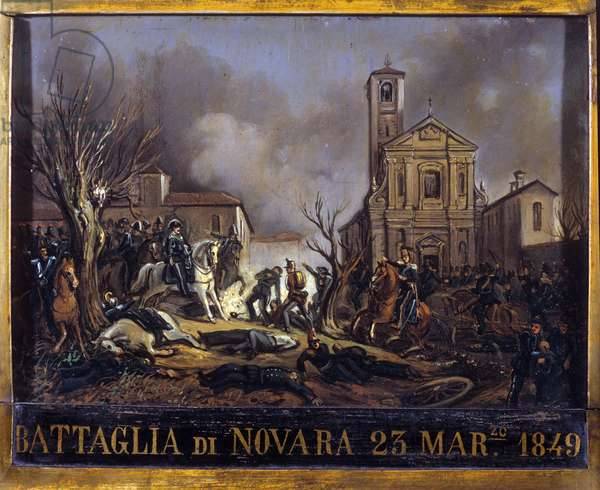
If you try to recall the most prominent commanders of the Habsburg empire in its entire history, then it turns out that one of them was French (this is Eugene of Savoy), and the second was Czech. We have already spoken about the Frenchman in the article "The Glorious Knight Prince Eugene". And who was the Czech hero of Austria? Certainly not Jan ижižka, whom everyone remembers when it comes to the great generals of Czech origin.
It turns out that the Austrian Field Marshal Josef Wenzel Radetzky was also a Czech, in whose honor Johann Strauss Sr. wrote the famous Welcome March (opus 1848) in 228. This composer is considered "the king of waltzes", but his march turned out so good that the Austrian officers who heard it for the first time, contrary to all the requirements of etiquette, began to clap their hands in time to the music. The melody of "Radetzky's March" is one of the most recognizable, I assure you, you all heard it and, perhaps, you can even sing it. This march ends the famous annual Christmas Ball in Vienna, and the participants no longer dance, but, like the first listeners, accompany the performance with applause.
Since 1896, this march has been a regimental march at the British 1st King's Dragoon Guards, in 1959 united with the Queen's Dragoons, now it is an armored regiment.
In addition, the Radetzky March is the ceremonial anthem of the Military Academy of Chile.
In our country, one of the versions of the text of this march is known from the novel by Yaroslav Gashek "The Adventures of the Good Soldier Schweik":
From Lombardy the crafty
He swore to sweep away the enemies.
Waited for reinforcements in Verona
And, though not without delay,
He waited, sighed lightly.
Few people know that Radetsky was also a field marshal of the Russian army, having received this rank and patronage over the Belarusian hussar regiment in 1849.
In addition to military talents, Joseph Radetzky had great success in learning foreign languages: to one degree or another he knew all 11 languages spoken by the subjects of the Austrian Empire. This greatly impressed the soldiers and officers of all nationalities, and therefore Radetzky even received the nickname "father of the army."
Monument War
All the more surprising is the attitude towards Radetzky at home in the 1918th century. After the Czech Republic gained independence in 1858, this hero of the bygone days began to be considered a traitor to national interests and a strangler of the freedom-loving people of Italy. And some even denied him the right to be called a Czech, contemptuously calling him "Austrian". The monument, erected by Radetzky in XNUMX on Lesser Town Square, was then dismantled and moved to the "lapidarium" - a branch of the National Museum.
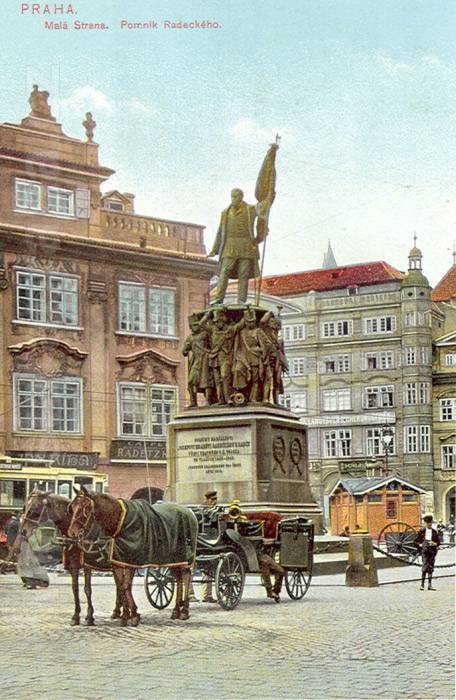
But in Vienna, the monument to Radetzky, erected in 1892, also had to be moved. The fact is that in 1912 he became the object of attacks by local "patriots" who were outraged that there was a monument to the Czech in the center of the capital. As a result, the sculpture was moved to the building of the Ministry of Defense, where it can still be seen.
True, now the ministries of agriculture, construction and trade are located here. And that is why the equestrian statue of the gallant commander at the building of such peace departments causes some bewilderment.
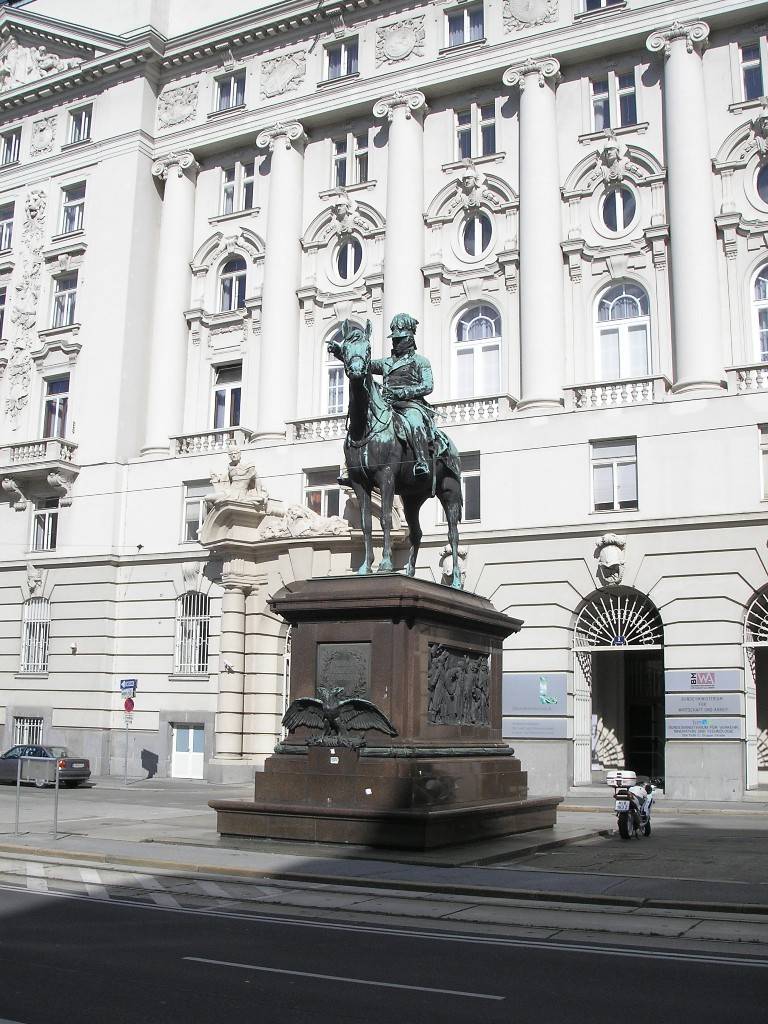
The young years of the commander
Josef Wenzel Radetzky was born in the Czech town of Trebnitsa on November 2, 1766 in a family of military hereditary.
Like A. V. Suvorov and Yevgeny Savoysky, in childhood he was not very healthy. Because of this, he did not manage to enter a military school. I had to go to the Brno noble academy, which trained government officials and lawyers. A year after his admission, by decree of Emperor Joseph II, it was merged with the Vienna Theresian Academy, whose students traditionally played the role of pages of court ladies. For young Radetsky, this service ended in embarrassment and scandal: he managed to get entangled in the train of "his" lady, and in the presence of the emperor. As a result, he was expelled from the academy, he was not admitted to the military school again, and then he decided to take a desperate step - in 1785 at the age of 18 he entered the cuirassier regiment as a cadet. Contrary to the expectations of skeptics, the young man's service went well, in 1786 he received the rank of second lieutenant, in 1787 he became a lieutenant of the cuirassier regiment.
In 1788, during another war with Turkey (in which Austria became an ally of Russia) Radetzky became an adjutant to Generalissimo Ernst Gideon Laudon.
Wars of France
And since 1792, Austria entered a long series of wars against the republican and then imperial France.
During the Battle of Fleurus (Belgium, June 1794), Radetzky, in the rank of lieutenant, led a cavalry detachment that made a reconnaissance raid on the enemy's rear, the purpose of which was to clarify the fate of the city of Charleroi besieged by the French. In this battle, the French, commanded by General Jourdain, used a balloon for the first time in world history to observe the battlefield. The battle ended in defeat for the Austrians, but their losses were less than the French.
In 1796 J. Radetzky again fought against the French, now in Italy. This time, Napoleon Bonaparte himself was at the head of the enemy army. On the part of the Austrians, General Johann Peter Beaulieu unsuccessfully tried to resist him, who once almost got captured, but the hussar detachment of Captain Radetzky saved the commander-in-chief. This campaign ended with the withdrawal of Austrian troops to Tyrol.
In 1796, we see the 30-year-old Major Josef Radetzky in Mantua, besieged by French troops. The fortress was surrendered, but the soldiers and officers of its garrison were allowed to leave. And in 1799, during the Italian campaign of Suvorov, Radetsky was subordinate to the Russian commander, fought in the battles of Trebbia (having distinguished himself during the pursuit of the retreating French) and at Novi. After these battles, Radetzky received the rank of colonel and was appointed to the headquarters of General Melas.
At the Battle of Marengo (June 1800) Radetzky commanded Prince Albrecht's cuirassier regiment and received five bullet wounds. Having recovered, he and his regiment went to Bavaria, where he took part in the battle of Hohenlinden (December 3, 1800). Here the Austrian army of Prince John was defeated by the French troops of General Moreau. This battle is also interesting in that the infamous Franz von Weyrother was then the chief of staff of the Austrians, who would become the author of the plan for the Battle of Austerlitz. But the Austrian command had no complaints about Radetzky, he was even awarded the Knight's Cross of the Order of Maria Theresa.
In 1805, Major General Radetzky fought again in Italy, where the armies of the Austrian Archduke Karl and the French Marshal Massena clashed. The largest battle was the Battle of Caldiero, the outcome of which was unclear until the evening, when Charles nevertheless showed to retreat, and the five thousandth Austrian covering corps surrendered.
On April 22, 1809, Radetzky's brigade took part in the Battle of Ekmühl, and then in the hardest battle of Wagram, in which Napoleon managed to win only at the cost of very high losses.
In 1810, Radetzky became Commander of the Order of Maria Teresa and Colonel of the 5th Hussar Regiment, whose soldiers have since become known as Radetzky Hussars.
After the end of that war, Radetzky was promoted to lieutenant general and became chief of the Austrian general staff. He remained in this position until 1812, trying to carry out reforms that could make the Austrian army more modern. However, faced with stubborn resistance in army circles, he resigned.
In 1813 Radetzky was appointed chief of staff of the allied forces, took part in the famous Battle of Leipzig, where two horses were killed under him. As a result of the battle, he was awarded the Russian Order of St. George, 3rd degree.
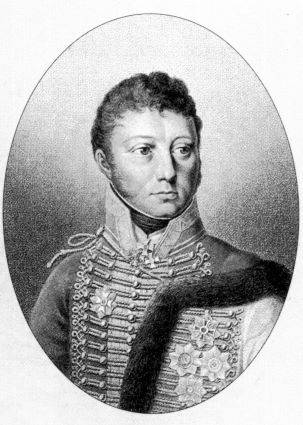
Later, he participated in the triumphal entry into Paris, and at the Congress of Vienna served as a mediator between Metternich and Alexander I.
After the war, Radetzky held the post of chief of the general staff of Austria, until in 1829 he was dismissed from this position and sent to command the fortress of the city of Olomuc in Moravia (in eastern Bohemia). The position was clearly insignificant for a military leader of this level, many perceived this appointment as disgrace and exile.
We remember that after the Czech Republic gained independence in 1918, the attitude towards Radetzky in this country became negative. But in Olomuc, Radetzky was always popular, and a holiday in his honor is still celebrated every year in this city. On the last weekend of August, military bands from different parts of the former Austrian Empire are playing along the central square with music. This parade is hosted by Josef Radetzky himself (more precisely, the actor portraying him).
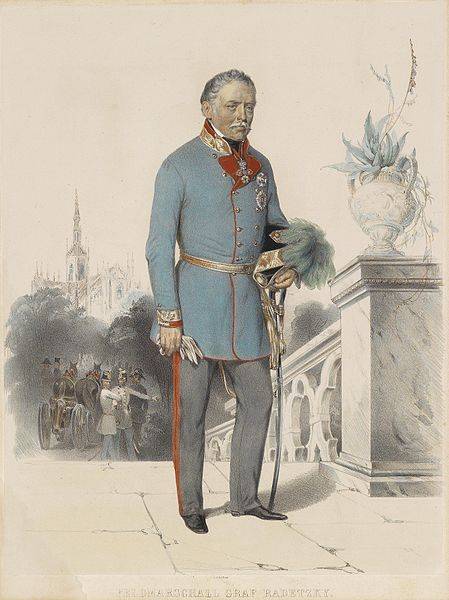
Wars in Italy
Radetzky stayed in Olomuc until February 1831, when he was urgently sent to Italy, where Modena, Parma and the provinces of the Papal States revolted. Radetzky became General Fremont's deputy. Already in March, the rebels were defeated. Radetzky, who remained in Italy, two years later received the post of commander of the Austrian army stationed there, and in 1836 - and the rank of field marshal.
Much more serious was the uprising of 1848, which engulfed the so-called Lombardo-Venetian Kingdom, which was part of the Austrian Empire.
It is about that war that is told in the "March of Radetzky", written by the Austrian patriot I. Strauss: "Count Radetzky, brave warrior, / From the crafty Lombardy / He swore to sweep away the enemies ..." Remember?
Until then, Radetzky's reputation had been impeccable.
However, participation in the events of 1848-1849. gave liberals of all stripes a reason to call him a reactionary and a strangler of freedom and democracy. The paradox is that it was then that Radetzky won major victories as commander-in-chief, after which his name became known to the whole world, and his popularity in Austria and the Czech Republic reached its limit. But it was these victories that later led to the fact that both Austrians and Czechs began to be ashamed of Radetzky.
So, the uprising that began in Milan on March 18, 1848 (Cinque giornate di Milano - "5 days of Milan") quickly engulfed the whole of Lombardy.
On March 22, 1848, the independence of Venice was proclaimed, the lawyer Daniele Manin became the president of the newly formed Republic of St. Mark.
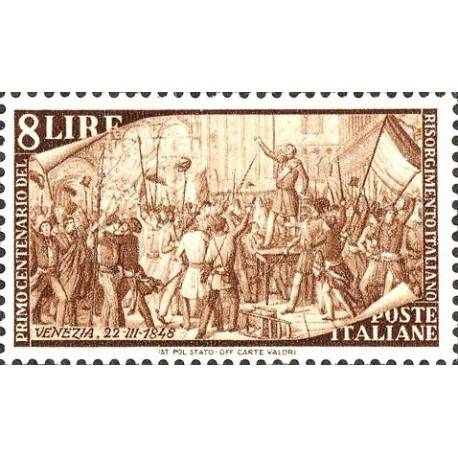
The rebels were supported by Pope Pius IX and King of Sardinia (Piedmont) Carl Albrecht, who declared claims to these lands and a desire to lead the war against Austria. In Lombardy and Venice, they responded with consent to his claims, which came as an unpleasant surprise for the revolutionary republicans. The same Manin, having learned about this, left the revolutionary government of Venice.
At the disposal of Radetzky (who, by the way, at that time was already 82 years old), there were 10 thousand soldiers in Milan and about 5 thousand more in the provinces, whom he was forced to take to Verona and Mantua. "I was waiting for reinforcements in Verona," says Radetzky's March.
Together with the new Austrian units, the young Prince Franz Joseph arrived, who was soon to become emperor. It may seem surprising, but during that turbulent time of the Vienna Revolution and the Hungarian Uprising, when his uncle and father abdicated one after another, the Italian army was not the most dangerous place in the empire. In the headquarters of the famous field marshal, in the opinion of the prince's mother, it was much calmer than in her own palace.
Radetsky, meanwhile, moved on to action. First, the Austrians again occupied the Venetian region, in the battle for which the brigade of the army of the Papal region was defeated. Then, on July 25, at the Battle of Custoza, the Sardinian army was defeated, which was pursued as far as Milan. The inhabitants of the capital of Lombardy, seeing the Austrian army in front of their walls, chose to surrender.
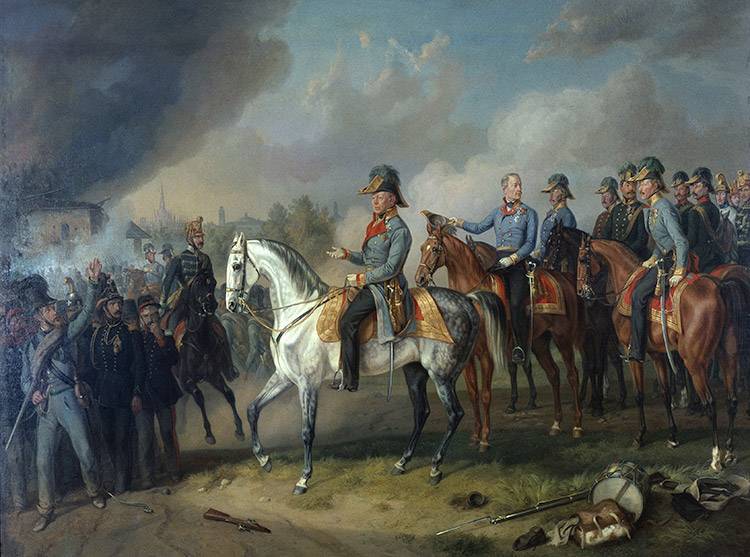
After that Radetsky was awarded the Russian Order of St. George, 1st degree, being in a narrow list of cavaliers, including Catherine II, P. Rumyantsev, G. Potemkin, A. Suvorov, M. Kutuzov, Barclay de Tolly, Prussian Marshal Blucher , the Swedish King Charles XVI (better known as Napoleonic Marshal Jean-Baptiste Bernadotte) and Wellington (25 people in total).
On August 31, 1848, Radetzky's troops in Vienna were greeted with the same "Welcome March" by Strauss.
King Carl Albrecht of Sardinia was forced to sign a truce, which was broken a few months later. The reaction in Radetzky's army to the news of a new war in Italy turned out to be paradoxical: everyone was so confident in Radetzky's military talents that at the news of the resumption of hostilities, many were overjoyed: everyone was waiting for a new victory.
The Italian army was unexpectedly led by the Pole Khrzhanovsky, a former captain of the Russian army, a deserter, who was the commandant of Warsaw during the next Polish uprising, and then talked about fictitious "exploits" in a cafe in Paris. The forces of the parties turned out to be approximately equal.
At first, the Italians were easily defeated at Mortara.
But the battle at Novara turned out to be very difficult. The Austrians attacked the height with the village of Biccoco, were knocked down from it, and only in the evening were able to re-capture it.
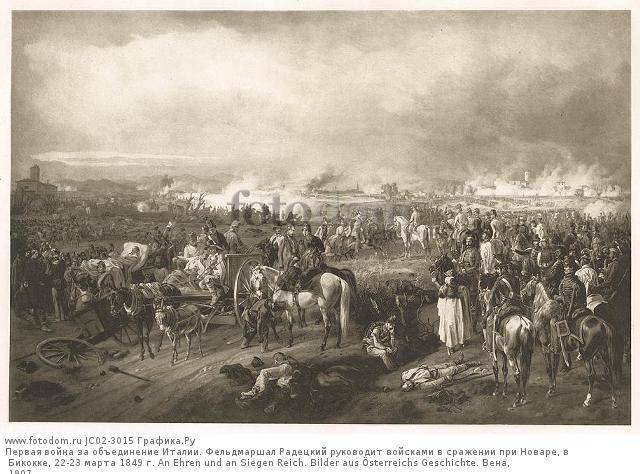
After that, the Sardinian king Carl Albrecht decided to abdicate and emigrated to Portugal. A new peace treaty was signed by his son Victor Emmanuel II.
In August 1849, besieged Venice surrendered, which the Austrians then tried to bombard from the air: at the suggestion of artillery lieutenant Franz Uhatius, with a favorable wind, balloons with bombs hanging on burning wicks were launched into the sky: when they burned out, the bomb fell down. Of course, there was no question of any accuracy, bombs fell anywhere, including into the water. But they managed to make some impression on the Venetians who were not accustomed to this. Ukhatius was awarded the nobility after the end of the war for his invention.
Thus, Josef Radetzky won his last victory at the age of 83.
Field Marshal was appointed Viceroy of Italy, presented with a golden marshal's baton, Olomouc awarded him the title of honorary citizen, and Franz Joseph paid the debts.
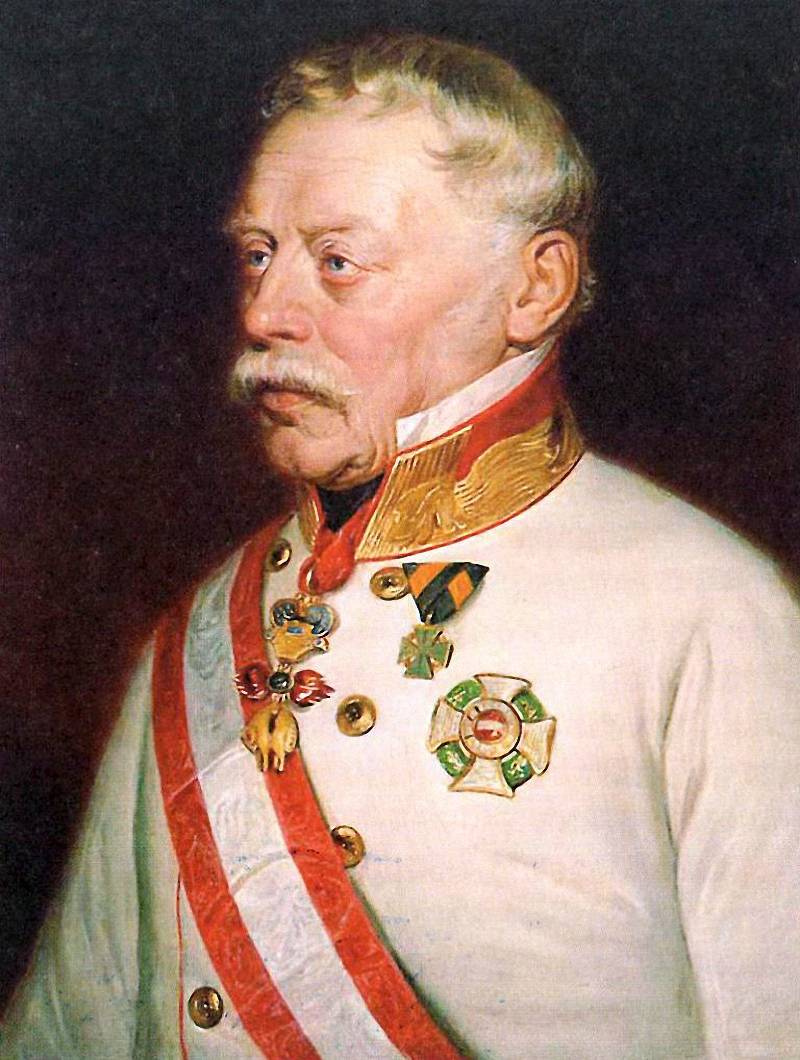
In the same year, Radetsky received the rank of Russian field marshal and was appointed chief of the Belarusian hussar regiment.
Hero's death
In 1857, Josef Radetzky, slipping on the floor, fell and broke his thigh. After lying for several months, he decided to participate in the winter review of the troops, at which he caught a cold. He was no longer destined to recover from a new illness, and on January 5, 1858, Field Marshal Radetzky died in Milan.
A funny story of the rivalry between Emperor Franz Joseph and the rich baptized Jew Joseph Parkfrieder, who considered himself the illegitimate son of Joseph II, is connected with his funeral. From a sense of vanity, Parkfrieder built a grandiose Pantheon of Heroes (Heldenberg), in which he was to be buried alongside the most prominent people of the Austrian Empire. In order to achieve their consent to burial in this Pantheon, he began to take upon himself the obligation of posthumous payment of all debts of candidates, who now could not deny themselves anything. Well, the graves of those of the great, who had already been buried elsewhere, in this Pantheon were replaced by sculptures and busts.
When Emperor Franz Joseph decided to bury Radetzky in the family burial vault of the Habsburgs, it turned out that Parkfrieder had already signed such an agreement with him (as well as with another field marshal, Freyer von Wimpffen). The disgruntled emperor decided to buy the Pantheon, but Parkfrider gave it away for free.
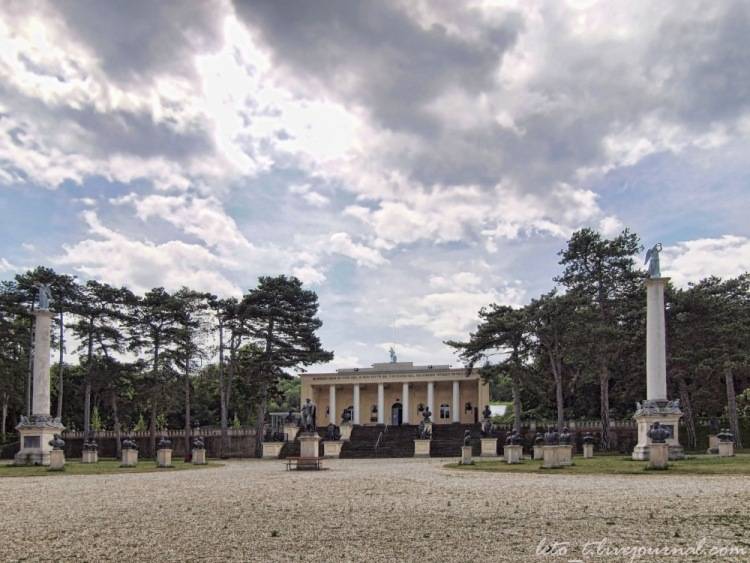
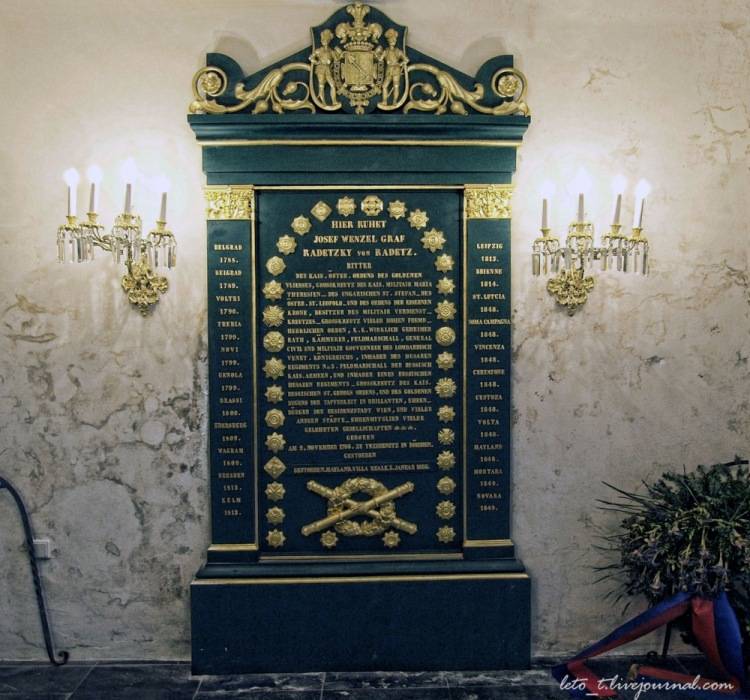
Currently, on the territory of this Pantheon there are 169 busts and sculptures, including two emperors: Rudolf I and Franz Joseph.
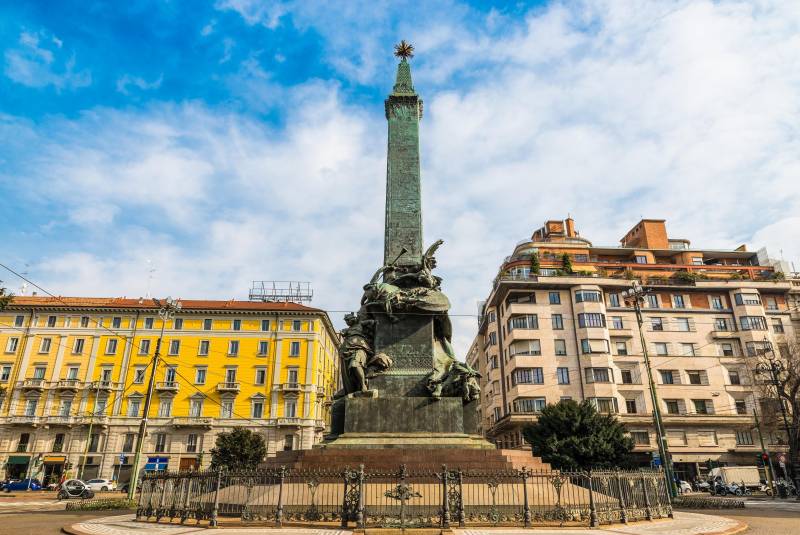
Information